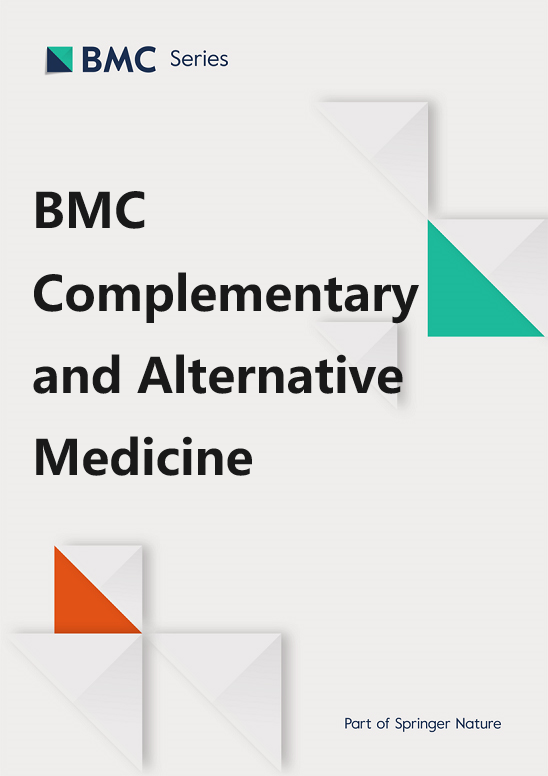PRECIS-2 analysis of pragmatic acupuncture trials: a systematic review
IF 3.4
2区 医学
Q1 Medicine
引用次数: 0
Abstract
Pragmatic acupuncture trials (PATs) are a research tool for assessing the effectiveness of acupuncture treatments in a real-world setting. This study aimed to provide a comprehensive methodological analysis of PATs using the PRECIS-2(PRagmatic Explanatory Continuum Indicator Summary-2) tool to determine their pragmatism. The MEDLINE, EMBASE, Cochrane Central Register for Controlled Trials, CINAHL, Allied and Complementary Medicine Database, China National Knowledge Infrastructure, VIP, WANFANG, Taiwan Periodical Literature Database, KoreaMed, KMbase, Research Information Service System, Oriental Medicine Advanced Searching Integrated System, CiNii and ClinicalTrials.gov were searched. The search included randomised controlled trials (RCTs) and protocols of RCTs that investigated all types of acupuncture and used self-declared pragmatic design. Two authors independently collected the basic information and characteristics of the studies and assessed their pragmatism using the nine PRECIS-2 domains and the additional domain of control. A total of 93 studies were included. The means of eligibility, recruitment, organisation, primary outcome, primary analysis, and control domains were statistically larger than three and were shown to be pragmatic. The means of setting, flexibility:delivery, and follow-up domains were not greater than three and were shown to be non-pragmatic. For flexibility:adherence domain was inappropriate for assessment owing to insufficient information in the studies. PATs were pragmatic in the domain of eligibility, recruitment, organisation, primary outcome, primary analysis, and control and were not pragmatic in the domain of setting, flexibility:delivery, and follow-up. Future PATs need to strengthen the pragmatism in the setting, flexibility:delivery, and follow-up domains and to describe the flexibility:adherence domain in more detail. CRD42021236975.PRECIS-2 实用针灸试验分析:系统回顾
实用针灸试验(PATs)是一种在真实世界环境中评估针灸治疗效果的研究工具。本研究旨在使用 PRECIS-2(PRagmatic Explanatory Continuum Indicator Summary-2)工具对 PAT 进行全面的方法学分析,以确定其实用性。本研究检索了MEDLINE、EMBASE、Cochrane对照试验中央注册中心、CINAHL、专科和补充医学数据库、中国国家知识基础设施、VIP、万方数据库、台湾期刊文献数据库、KoreaMed、KMbase、研究信息服务系统、东方医学高级检索集成系统、CiNii和ClinicalTrials.gov。搜索范围包括研究所有类型针灸并采用自我声明的实用主义设计的随机对照试验(RCT)和 RCT 方案。两位作者独立收集了研究的基本信息和特征,并使用 PRECIS-2 的九个领域和控制的附加领域对其实用性进行了评估。共有 93 项研究被纳入其中。资格、招募、组织、主要结果、主要分析和控制领域的平均值在统计上大于 3,并被证明是实用的。设置、灵活性:提供和随访领域的均值均未超过 3,被证明是非实用性的。由于研究信息不足,灵活性:坚持领域不适合进行评估。PAT 在资格、招募、组织、主要结果、主要分析和控制方面是务实的,而在设置、灵活性:实施和随访方面则不务实。未来的 PAT 需要加强设置、灵活性:交付和随访领域的实用性,并更详细地描述灵活性:依从性领域。CRD42021236975。
本文章由计算机程序翻译,如有差异,请以英文原文为准。
求助全文
约1分钟内获得全文
求助全文
来源期刊

BMC Complementary and Alternative Medicine
INTEGRATIVE & COMPLEMENTARY MEDICINE-
CiteScore
7.00
自引率
0.00%
发文量
0
审稿时长
3 months
期刊介绍:
BMC Complementary Medicine and Therapies is an open access journal publishing original peer-reviewed research articles on interventions and resources that complement or replace conventional therapies, with a specific emphasis on research that explores the biological mechanisms of action, as well as their efficacy, safety, costs, patterns of use and/or implementation.
 求助内容:
求助内容: 应助结果提醒方式:
应助结果提醒方式:


